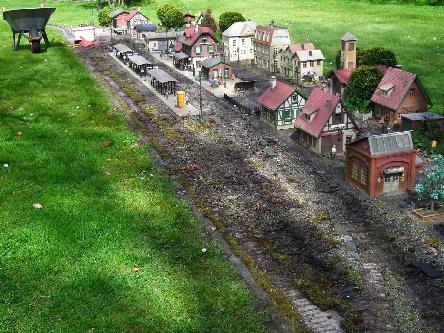Katzhagen - Archive - May 2012
A good deal of gravel...
in form of 2-3m chippings used for road building already had been replaced in 2011 along the tracks between the stations because of moss in the gravelbed and since the formerly used waterproof Ponal glue showed severe granular disintegration. Sarnacol 2116, a special glue for gravel ballasted roofs made by Sika was used with the new gravelbeds instead of Ponal. After a periode of one year an amazing success was observed regarding its durability: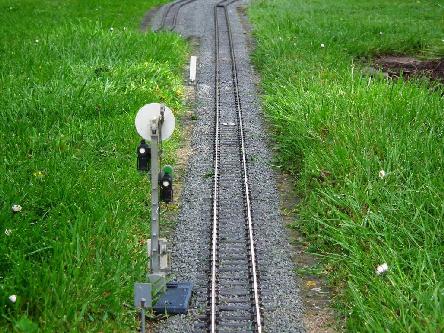
Still in excellent shape after one year
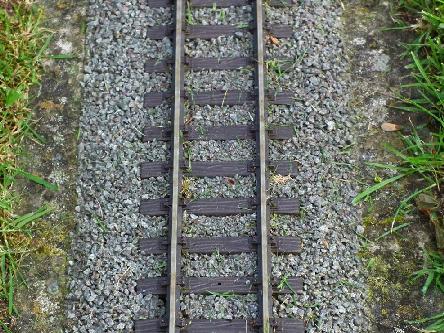
Even a closer look reveals no damages
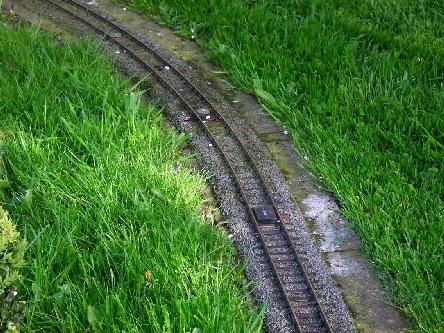
Even high pressure washers cause no damage !
The former gravelbed which was glued using waterproof Ponal (thinned 1:3 with
water) first seemed to be a satisfactory solution. But first signs of
disintegration showed up after just one year. Fissures appeared along the
crossties and first edges broke off. The reason for this clearly was the
Ponal's inelasticity after it had dried out. The tracks contraction and
elongation due to changing temperatures resulted in the glue's destruction.
May be the Ponal glue also isn't as waterproof as it is said to be...
However, the calamity took its ineluctable course and moss crept into the fissures. After a couple of years the gravel was overgrown by the moss in several places.
The gravel glued with Sarnacol 2116 behaved far superior ! The pictures above and on the left show no signs of disaggregation at all after one year. Even cleaning the gravel bed with a high pressure washer does no harm to the glued gravel which is shown in the picture on the left. This were impossible with a Ponal-glued gravel bed !
However, the calamity took its ineluctable course and moss crept into the fissures. After a couple of years the gravel was overgrown by the moss in several places.
The gravel glued with Sarnacol 2116 behaved far superior ! The pictures above and on the left show no signs of disaggregation at all after one year. Even cleaning the gravel bed with a high pressure washer does no harm to the glued gravel which is shown in the picture on the left. This were impossible with a Ponal-glued gravel bed !
The Sarnacol's substantial advantage is that it remains flexible after it dries out and that due to this property the gravel bed is able to follow the tracks' movements caused by changing temperatures. Ergo there are neither break-offs nore fissures and the moss or other green cover has no chance any longer...
Sarnacol 2116 comes ready for use in a 20kg canister and can be obtained from merchants specialized in products for roof tilers, who sell Sika products.
Annoying
but necessary is washing the gravel which comes right out of the mill (f.i. if you picked it up from your local gravel or asphalt plant) since it contains a lot of dust - up to 10%. This dust needs to be washed out of the gravel to ensure the glue will adhere properly. Arm yourself with a couple of buckets, an old colander from the kitchen and a hose as well as a wheelbarrow for drying the gravel...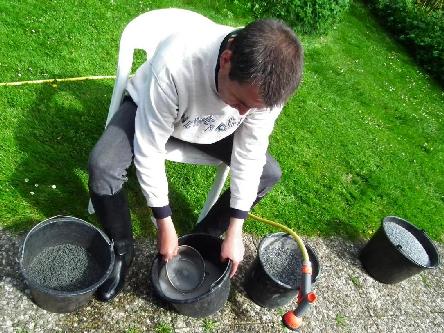
Washing out floating particles like rests of blossoms...
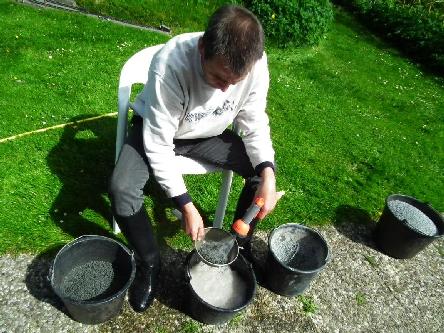
... and cleaning the gravel thoroughly with a shower
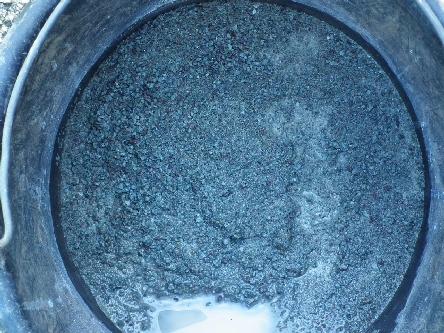
20 litres of gravel - 2 litres of stone dust
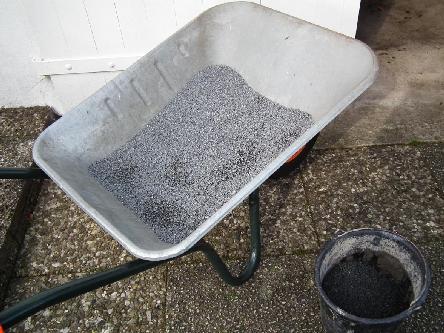
Drying the gravel by deploying thin layers
The weather
is a serious matter when it comes to glueing the gravel. There should be no rain for at least 24 hours and the temperature should be no less than 10°C / 50°F - the warmer the better. But first the old gravel had to be removed and the flagstone's surface had to be cleaned. This kind of work is no real fun...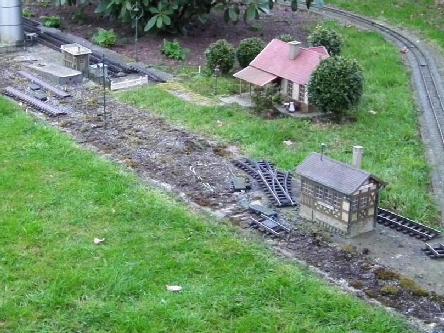
Removing the scruffy gravel bed from the freight station area
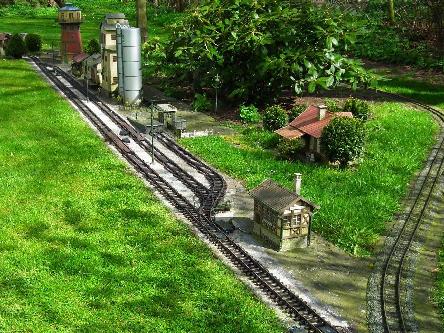
Cleaned subgrade
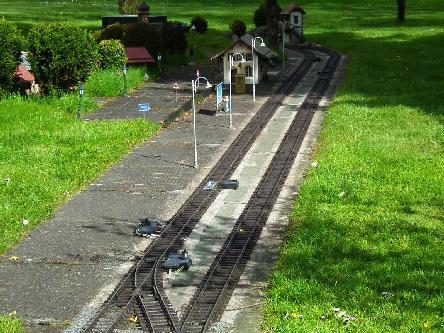
The same procedure with the station in Susch
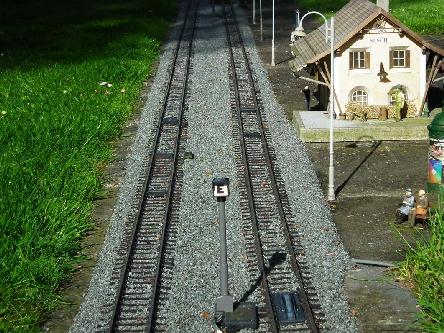
The new Susch gravel bed
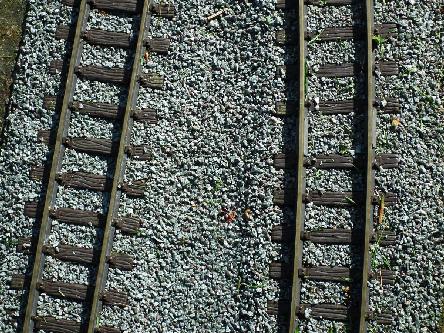
Getting granular on the new gravel bed - looks excellent
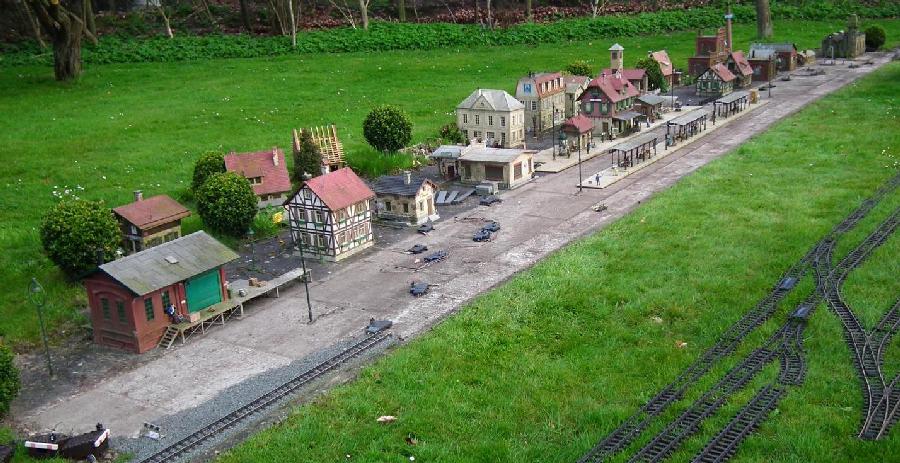
Katzhagen after disassembling the tracks and removal of the manky gravel bed. Deplyoing the new gravel will take significantly longer...
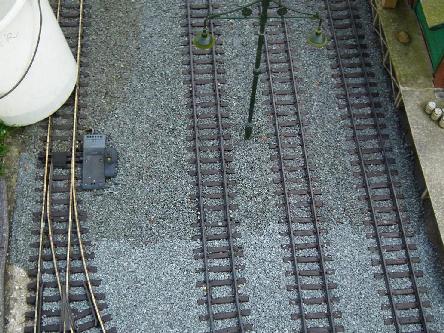
Gravel from the previous year as well as fresh and glued gravel
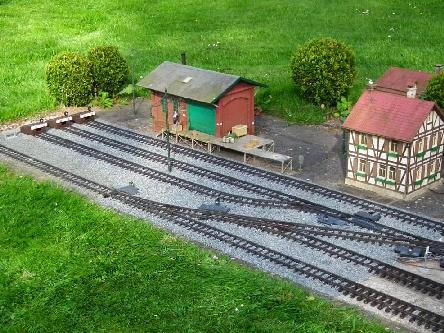
Different tonalities vanish after the glue dries out
Glueing the gravel can either be done by deplyoing a mash made from gravel and glue (which I consider to be a medium mess resulting in a questionable result) or by spraying the glue onto the formed bed with an aerosol can. Both of these methods preclude protection of the railheads and turnouts against contact with the glue.
The somewhat time-consuming application of the glue drop by drop using a dish liquid bottle has the significant advantage that neither any protection nor any reworking measures need to be taken.
April 2012 | Archive "Current Affairs" | June 2012

